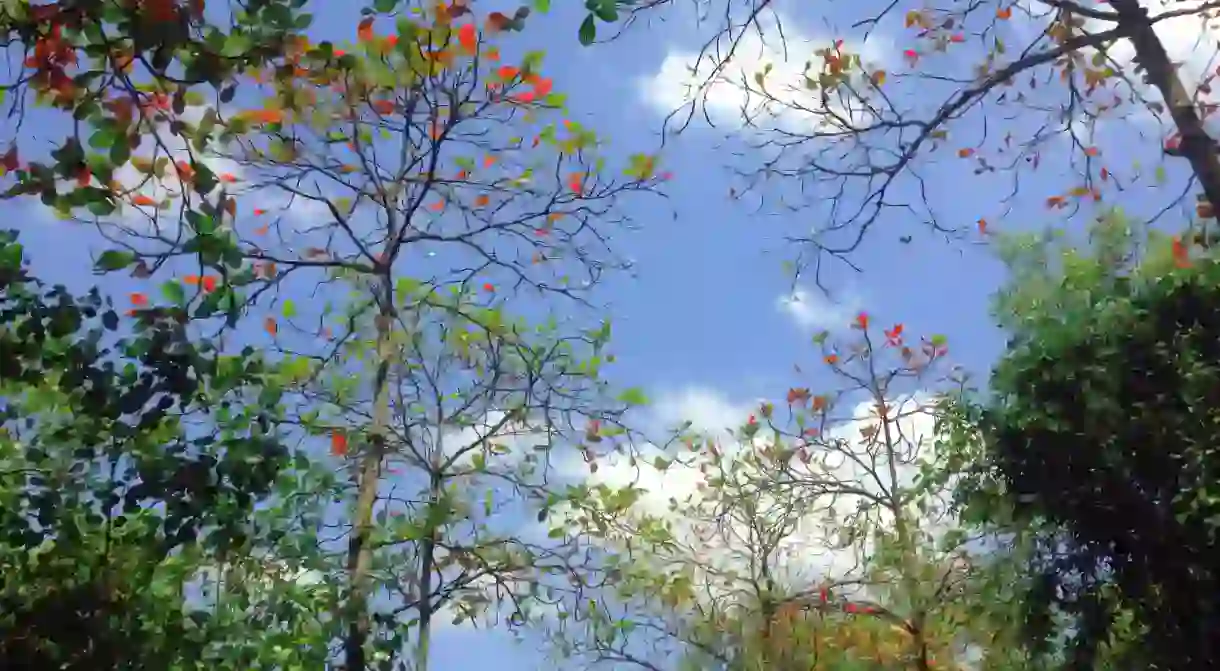Singapore Off The Beaten Track: Sungei Buloh

There’s more to Singapore than shopping centers and towering skyscrapers. Well hidden in the northwestern area of Singapore called Kranji, Sungei Buloh Wetland Reserve is the kind of place you wouldn’t expect to exist in Singapore, full of lush greenery with occasional red leaves. Rich biodiversity abounds with no concrete jungle anywhere in sight.
First opened as a Nature Park in 1993, the trekking route in Sungei Buloh takes you through 202 hectares of mangroves, mudflats, ponds, forests and coastal areas. With such a diverse ecosystem, it’s no wonder that Sungei Buloh is a sanctuary for a variety of fascinating wildlife with which you’ll have opportunities for close encounters.
Look up to the sky. You’ll find a colorful spider hanging on a thread with dozens of complex, interweaving webs behind it. Look at the mud. During low tides, you can spot plenty of tree-climbing crabs, mudskippers, mud lobsters, horseshoe crabs and mollusks crawling and foraging for food. And if you see something lurking behind the grass, get your camera ready, as you must have bumped into a Malayan water monitor lizard going about its day hunting for prey.

From September to March, over 150 species of exotic and migratory birds stop by Sungei Buloh to feed on worms and mollusks found in the reserve’s rich mudflats. These birds fly all the way from Siberia, Northern China, and Alaska on their way to Australia to escape the cold winter months. Due to its global ecological importance, the wetland reserve is included in the East Asian Australasian Shorebird Site Network and became Singapore’s first ASEAN Heritage Park in 2003.
Amongst the many bird species you can find here are the whimbrel, Mongolian plover, cinnamon bittern, Pacific golden plover, marsh sandpiper, yellow bittern, curlew sandpiper, collared kingfisher, Chinese egrets, greater crested terns, greater spotted eagles, osprey, zebra dove, purple heron, white-breasted waterhen, yellow-bellied prinia, black-naped oriole, large-tailed nightjar, yellow-vented bulbul, ashy tailorbird, lesser coucal, house swift, stork-billed kingfisher, magpie robin, common moorhen, lesser whistling-duck and milky stork.
Observation hides and onion-shaped pods are constructed at strategic locations around the wetland, making for ideal viewpoints to observe wildlife in their natural habitat without scaring them away. Boardwalks and paved gravel roads also make trekking through the mangrove an easy, dry and pleasant experience for anyone, including children and people in wheelchairs.

A few final tips: Don’t forget to bring binoculars and a camera with a telephoto zoom lens as migratory birds can be quite far away. A day in Sungei Buloh can get really hot, and the whole trek takes three to five hours to complete; thus, plenty of drinking water, sun protection, clothes with breathable fabrics and comfortable walking shoes are essential. Lastly, to fully appreciate the rustic charm of Sungei Buloh without the mozzies, bring some insect repellent.
A quiet day stroll through the tranquil Sungei Buloh is a truly unique experience if you wish to escape from the hustle and bustle of the city. It makes us realize that sometimes it’s good to take a break from our fast-paced life and get in touch with nature.
Admission to Sungei Buloh Wetland Reserve is free. It opens daily from 7 am to 7 pm, with free guided walks available from 9:30 am to 11 am. To get there, board Kranji Express from Kranji MRT Station. Kranji Express operates daily from 8:30 am to 5:45 pm. For details, see Kranji Express’ complete schedule.












